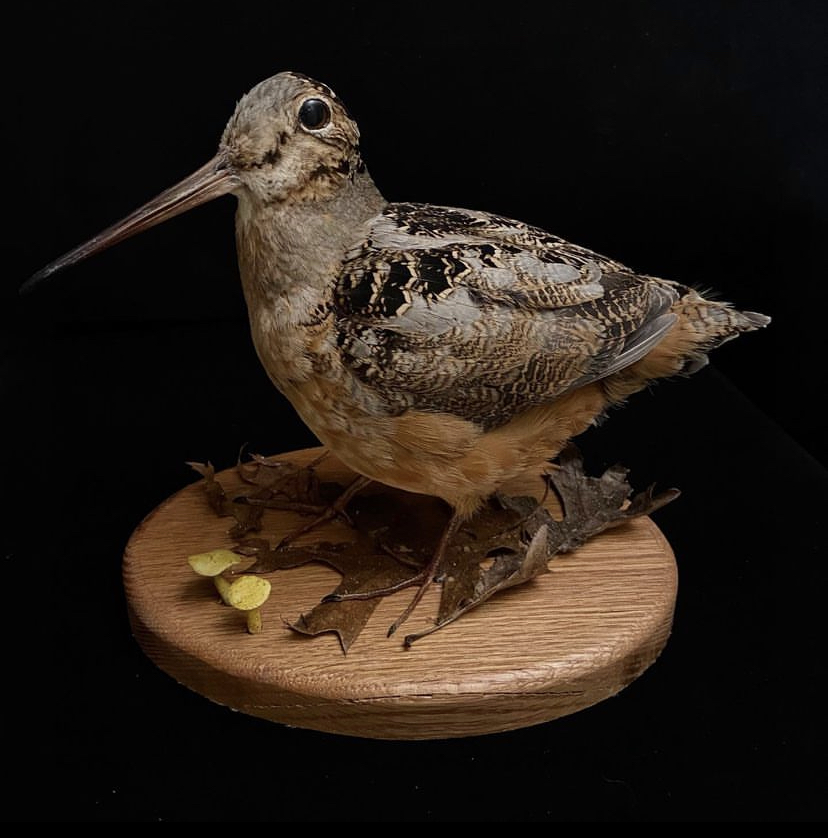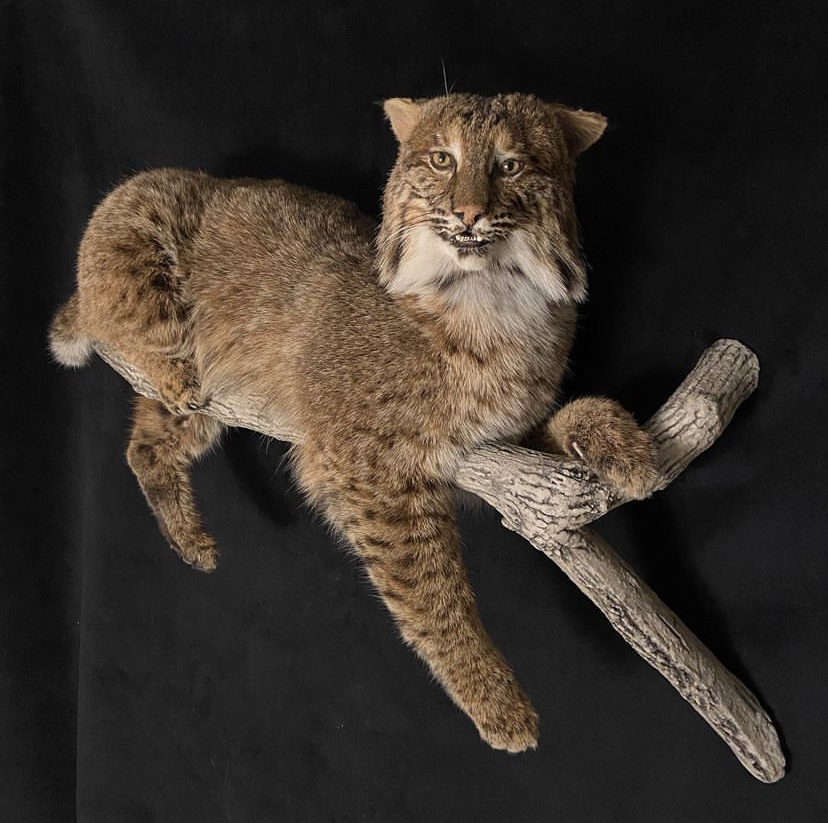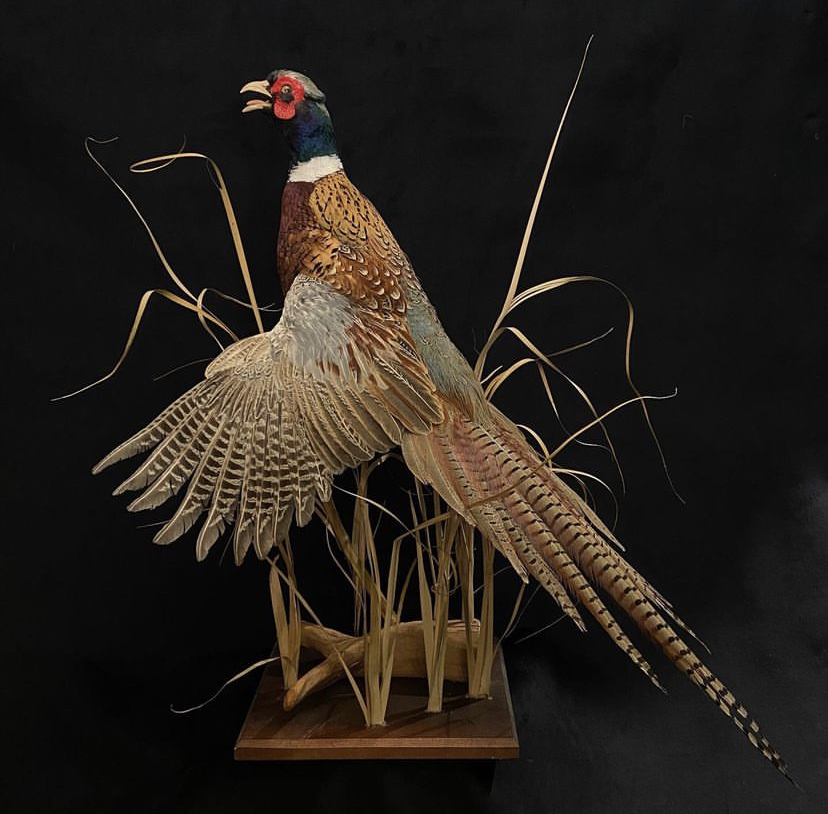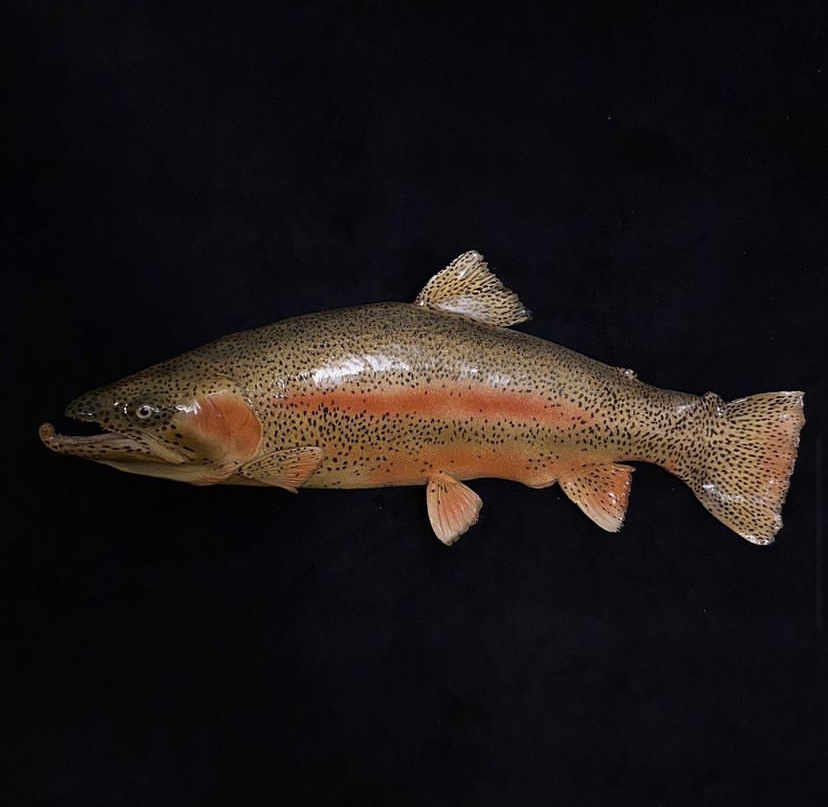
When people hear the term ‘taxidermy,’ the same style of imagery comes to mind: maybe it’s grandma’s beloved cat preserved in the living room, or game on display at a Bass Pro Shop. Regardless of what animal is living out its afterlife, or what space it is doing so in, there’s a common denominator – a preserved animal.
Taxidermy isn’t often represented in pop culture, and when it is, it tends to be through a comedic or macabre lens. Think the 2010 movie Dinner for Schmucks, for example, where Steve Carell plays an IRS employee who moonlights as an amateur taxidermist. Though taxidermy is something that hasn’t been widely represented in pop culture, it is an art form that stretches back in time and deserves recognition for its roots and evolution.
Taxidermy comes from the Greek ‘taxis’ (arrangement) and ‘derma’ (skin). The word taxidermy quite literally means an arrangement of the skin. The term was first used in 1803 by Louis Dufresne at the Museum National d’Histoire Naturelle in Paris. Taxidermy is the practice of creating lifelike representations of animals by the use of their prepared skins and supporting structure, or, in simpler terms, the preservation and display of deceased animals.
The first known taxidermists were the ancient Egyptians, who used an assortment of injections, spices, oils, and other treatments to preserve and mummify animals around the year 2200 BC. Some animals the Egyptians mummified were dogs, cats, monkeys, birds, and even a hippopotamus in one recorded instance. These animals were entombed with pharaohs or nobility to carry over with them into the afterlife. It’s interesting to think of what these taxidermied animals would have looked like – the Egyptians’ use of taxidermy wasn’t for aesthetic value, and due to differences in technologies and methods, they likely looked much different than what we see in taxidermied animals today.
Moving ahead in time, the 18th and 19th centuries brought about new reasons for people to practice taxidermy – a growth of interest in natural history, and a boastful class of people. Especially moving into the Victorian Era (1837–1901), taxidermy proved a popular way for European scientists and the general public to examine foreign species they would never see in their day-to-day lives, especially considering the absence of color photography and the luxury of leisure travel. It also served as a means to bring attention to important animal-related issues. Take William Hornaday for example. Hornaday was the chief taxidermist at the Smithsonian in the 1880s who took great issue with the rate at which people hunted the American bison, so much so that he brought some back to Washington, mounted them, and displayed them in an effort to draw attention to the issue’s importance. Though counterintuitive toward his cause, Hornaday’s display contributed to the later creation of the federally protected bison range in Yellowstone.



The Victorian Era also marked the beginning of taxidermy’s popularity in stuffing pets, and the development of anthropomorphic taxidermy, in which “specimens were positioned (and sometimes clothed) as though participating in human activities like boxing or playing in a band.” According to a report on taxidermy in Smithsonian Magazine, taxidermy was so prevalent in the late-19th century (both in America and England) that there was a taxidermist in every town. The report notes, “According to The History of Taxidermy, the London census of 1891 shows that 369 taxidermists operated in the English capital city alone, about one taxidermist for every 15,000 Londoners.”
This burst in taxidermy’s popularity was made possible by a number of advancements that took place in the 18th century, such as chemical means of preserving skins. Around 1743, bird skin collector Jean-Baptist Bécœur developed an arsenical soap made of pulverized arsenic, white soap, and calcium oxide, which was made to preserve the skin and repel insects. Bécœur’s recipe was kept a secret during his lifetime, but collectors and taxidermists were able to reverse engineer his formula not long after his death. Arsenic was a popular insecticide for taxidermists and was used until the 20th century, despite its toxicity and danger to humans. Because of this danger, modern taxidermists have opted to use much milder chemicals, such as borax.
The way in which animals were mounted and arranged had improved as well. Far before the Victorian Era, taxidermy practices consisted of stuffing animal skins with straw and hay to try to recreate the appearance of a live animal. Some early taxidermists even stuffed their mounts with sawdust and rags, which caused them to look quite disfigured. However, methods began to gradually improve as the Victorian Era rolled along, especially when it came to preparing skins, mounting, and creating realistic displays. As taxidermy became a museum art, mounts displayed with artificial vegetation, painted backgrounds, and simulated habitats became more prevalent, which contributed to their realism.
Two major figures can be credited with the development of taxidermy as we know it today: Henry Augustus Ward and Carl Akeley. Henry Ward was born in Rochester, NY in 1834, and lived in Europe from 1854 to 1860. While in Europe, he traveled and collected a number of geological specimens and casts of famous European fossils. When he was abroad, he was inspired by Europe’s impressive museums, and began to dream of how he could create American institutions that were even more magnificent. Upon his return, he created Ward’s Natural Science Establishment, more casually referred to as the Establishment, in Rochester NY. At the Establishment, Ward practiced casting techniques that “kicked off a new era of large public natural history museums in America that highlighted examples of life’s present and past biodiversity.” He is largely credited for establishing the techniques for constructing anatomically correct clay and plaster forms that are the basis of modern taxidermy.
Carl Akeley, commonly referred to as the “Father of Modern Taxidermy,” was born in Clarendon, NY in 1864. His interest in taxidermy began at a young age. When he was 12, he was first exposed to taxidermy in Rochester at an exhibit that displayed 50 small birds and mammals. He was so struck by this exhibit that when his cousin’s canary died, he insisted on “fixing” it. He skinned and stuffed the bird, and sewed beads on its eyes.
When he was 18, he went to Brockport, NY to work for taxidermist David Bruce, who was the creator of the exhibit that inspired him at 12 years old. Bruce was so impressed by Akeley’s passion and talent that he suggested Akeley work for Henry Ward in Rochester. He famously worked with another member of the Establishment to mount Jumbo, P.T. Barnum’s prized elephant, in 1885. In his lifetime, Akeley helped to develop the manikin method, in which a wooden armature is lined with a layer of wire mesh to form animal contours, and the mesh shell is then covered with a plaster-fiber mixture and sculpted. This method later evolved to what is practiced in modern taxidermy, where mannequins are now purchased and sculpted into different positions, then skin is stretched and sewn over the mannequins. This practice renders more realistic mounts, in sharp contrast to previous stuffing methods.
After WWI, taxidermy’s popularity began to decline, notably because of new technologies such as color photos and amateur photography. Smithsonian Magazine explained how amateur birders and professional ornithologists now had more reference texts and books with detailed write-ups and photographs of thousands of birds, which defeated much of the purpose and scientific need for private collections of preserved animals. They note, “Mantles that once were decorated with brightly colored taxidermy birds were now being decorated more cheaply with photos.”
Though taxidermy began to decline in the 20th century, it didn’t completely fade out. There has been an increased interest in recent years, and a growth of involvement from women. According to Larry Blomquist, previous owner of one of the largest taxidermy studios in the US, there are more females interested in taxidermy now than 20 or 25 years ago. In fact, taxidermy in the US has grown to be an $800 million industry.
No matter the field, it is always impressive to see an art form that has lasted from ancient Egypt to present day, and it is always interesting to see how its traditions and practices have evolved. From stuffing arsenic-infused animal skins with sawdust to sewing preserved animal skins to precisely-sculpted models, the field of taxidermy keeps on improving. I look forward to seeing what its future has in store.
Interview: Joe Pagano, “JP Taxidermy” (Scituate, RI)
Maddie Jarvis (Motif): How long have you been a taxidermist?
Joe Pagano: Before my mother passed away, she found a book from elementary school. It said, “What I Want To Be When I Grow Up.” It had a list of fireman, policeman, construction worker, then at the bottom it had a blank space for other. She filled in ‘taxidermist.’ That was in kindergarten and I found that book a few years ago. So I’ve been into it for a long time. I’ve been doing it professionally for probably over 40 years.
MJ: What got you interested in taxidermy, and what continues to keep you interested in it?
JP: I went to the Roger Williams Museum once and saw the animal display they had in there when I was a kid, that stuck in my mind. That’s what got me started.
MJ: How does your business typically operate? Do you work on commissions, do you create pieces that you’re inspired by? And what does pricing usually look like for your projects?
JP: I do a lot of custom stuff, so it depends on what people want to add to it. For example a fish is $18 per inch. Say somebody brings a deer head in, there’s a flat rate for a deer head. Unless they want something different, or something weird. Sometimes they want them with an apple in their mouth or something like that. It goes up from there. But I do a lot of custom stuff; I do work for the Roger Williams Museum, New Bedford Whaling Museum, Brown University, Audubon Society, a lot of protected stuff that normally you wouldn’t see people have. I do a lot of protected birds.
MJ: What are the custom pieces you do in your work, and what are some common animals you work with? I know you just mentioned birds, and fish as well.
JP: Some of the custom ones are birds, I have two pheasants fighting over a female pheasant. I have fish, salmon; three males surrounding a female salmon, fighting over her. It goes on the wall, but they don’t sit on the wall flat, it’s 3D. I’ve done turtles, snakes… you name it and I’ve probably done it over the years!
MJ: What’s your favorite animal, or types of animals, to work with? And do you have a least favorite, maybe one that’s difficult?
JP: My favorite is probably birds and small animals. Least favorite is just big animals that take a lot of time.
MJ: How long does it typically take to complete a project?
JP: It depends on what it is. There’s a lot of steps – once it’s mounted it has to dry, the fur and skin has to dry over the forms. A lot of the forms I make out of styrofoam, I just carve my own bodies. You can order them from catalogs, but I make a lot of my own. Once the fur is on, or the bird skin is on with the feathers, it has to dry. It has to be finished with painting. As far as fish go, every fish has to be painted with an airbrush because the skin fades from the chemicals when I put them on the bodies.
MJ: What techniques do you use in your work? How do you typically move through a project?
JP: Every one is different. The birds, once they’re skinned out, say it’s a greasy bird like a duck. They have to be degreased. All the fat has to be cleaned out. On the reverse side of the feathers there are quills that stick to the skin, they all need to be cleaned, and usually it’s done with a wire wheel, then it has to be degreased, dried, and degreased again…so there’s a lot of steps with that. With the animals with fur, if it’s something big I have to send it out to have it tanned. If it’s something small I can do it right in-shop. The tanning is a whole separate process with chemicals, which is why I usually send it out since they do big batches at a time. It’s not worth it for me to mix up a whole bunch of chemicals to do a couple of hides. I’m probably leaving a lot of steps out.


